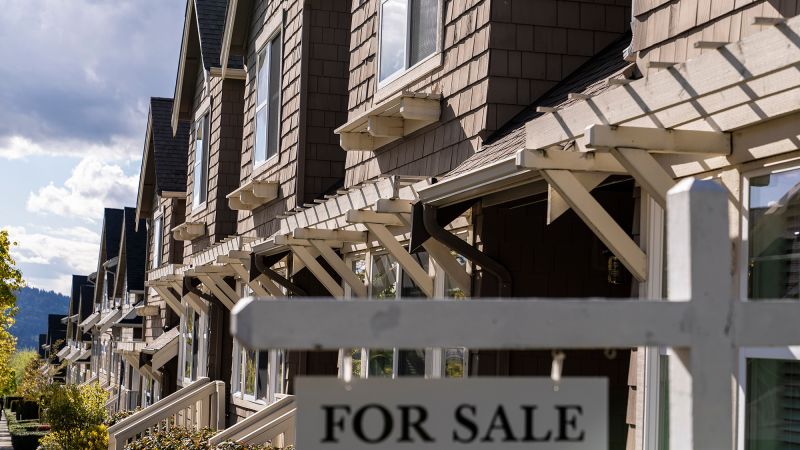Mortgage rates in the United States have recently exceeded 7%, which is seen as a significant threshold in terms of affordability for potential homebuyers. In the week ending April 18, the 30-year fixed-rate mortgage averaged 7.10%, up from 6.88% the previous week. This increase has been attributed to expectations that the Federal Reserve will not cut interest rates in the near future, as the Fed’s actions have an influence on mortgage rates. The trend of rising rates has led potential homebuyers to decide whether to purchase now before rates increase further or wait for potential decreases later in the year.
The National Association of Realtors reported a sharp decline in US home sales in March, indicating that homebuyers are holding back due to the challenging housing market conditions. Fed officials have suggested that there may be fewer rate cuts this year than initially expected, as recent economic data has shown a slowdown in progress on inflation. This has caused bond yields to increase, with the benchmark 10-year Treasury yield rising to its highest level since November. The Consumer Price Index for March also came in higher than expected, leading forecasters to delay their projections for the first rate cut.
As mortgage rates continue to rise, impacting affordability for potential homebuyers, the chief economist of the NAR highlighted the significant impact on decision-making for buyers. In addition to high mortgage rates, housing affordability is further hindered by elevated home prices across the country, with the median price of an existing home reaching $393,500 in the previous month, marking a 4.8% increase from the previous year. Despite the challenging housing market conditions, Americans are benefiting from a strong job market, adding complexity to the decision-making process for prospective homebuyers.
The housing affordability crisis in the US is exacerbated by rising mortgage rates and soaring home prices, with the median cost of an existing home reaching record highs in recent months. The tough market conditions have led to a decline in home sales as potential buyers navigate the challenges of finding affordable housing. The influence of the Federal Reserve on mortgage rates through its policy decisions has further increased uncertainty for buyers who must weigh the potential impact of rising rates on their monthly payments. As inflation remains a concern, there is a possibility that mortgage rates could continue to climb higher throughout the year, adding to the challenges of the current housing market.
Despite the difficulties in the housing market, Americans are benefiting from a strong job market, which provides some economic stability amidst the affordability crisis. However, the combination of rising mortgage rates, high home prices, and uncertainty around Federal Reserve decisions create a complex environment for potential homebuyers. The decision-making process for buyers is further complicated by the psychological threshold of mortgage rates exceeding 7%, prompting individuals to carefully consider their financial situation before making a purchase. As developments continue to unfold in the housing market, it remains to be seen how these factors will impact affordability and buying trends in the coming months.


